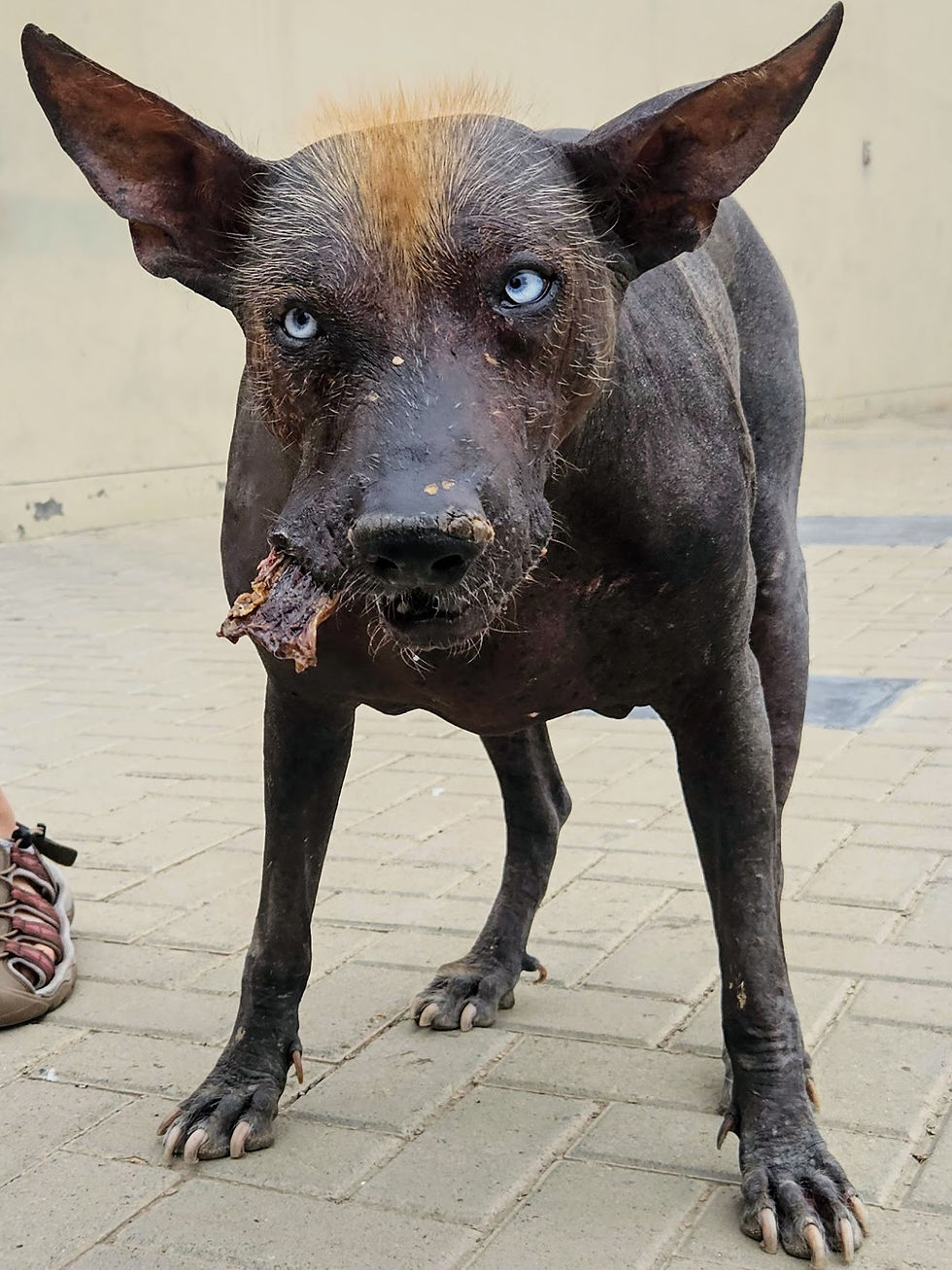You Can Prevent Dog Bites!
- linda58968
- Feb 29, 2024
- 3 min read

Dogs are freaking amazing. What other animals do we invite into our homes, our beds, and our social circles while expecting them to be nice to our strange friends, know where to pee and poop, live in our homes without destroying them, and adjust to our modern lifestyle that often requires them to go against all of their natural instincts? When you really stop to think about it, we ask sooo much of dogs and for the most part, they deliver, but we have to remember that they are animals with their own instincts and behaviors. Understanding how to read a dog's body language, respecting their personal space, and managing situations that can potentially lead to dog bites is crucial for promoting safety and harmony between humans and dogs. In this blog post, we'll explore these key aspects and provide practical tips to help prevent dog bites and create a safer environment for everyone.

Learn to Read Dog's Body Language: Dogs communicate their feelings and intentions primarily through body language. By understanding their signals, you can gauge their mood and respond appropriately. Here are some important cues to observe:
a. Tail Position: A relaxed wagging tail usually indicates a friendly dog, while a tucked tail or stiff, high-held tail might suggest fear or aggression.
b. Ears: Pricked-up ears signal alertness, while flattened or pinned-back ears may indicate stress or aggression.
c. Eyes: Dilated pupils, intense staring, or averted gaze can be signs of fear, anxiety, or discomfort.
d. Body Posture: A relaxed, loose body posture with a slightly wagging tail generally indicates a content and friendly dog. Conversely, a stiff, tense body, raised hackles, or a lowered head may suggest aggression or fear.
e. Vocalizations: Growling, snarling, or barking can indicate the dog's discomfort or a warning sign.
2. Respect a Dog's Personal Space: Respecting a dog's personal space is essential, especially when interacting with unfamiliar dogs. We covered how to approach an unfamiliar dog in our last blog post, but just as a reminder, here are some guidelines to follow:
a. Ask Permission: Always seek the owner's permission before approaching or petting a dog. Some dogs may not be comfortable with strangers.
b. Approach with Caution: Approach dogs slowly, using non-threatening body language. Avoid sudden movements or direct eye contact, which can be intimidating.
c. Let Them Come to You: Allow dogs to approach you first. Avoid reaching out to pet them until they show signs of comfort and invitation.
d. Avoid Hugging or Kissing: While many dogs enjoy physical affection, some may find it uncomfortable or threatening. Respect their boundaries and let them initiate contact. Hugging is not as much fun for a mammal with four legs and no arms as it is for a human or ape that has arms made for hugging!
e. Supervise Interactions with Children: Teach children how to interact with dogs safely, emphasizing gentle behavior and avoiding rough play. Adult supervision is crucial to ensure appropriate interactions.

3. Manage Situations that Evoke Dog Bites: Certain situations can trigger fear or aggression in dogs, increasing the risk of bites. So much of prevention is management and not putting your dog in a situation that is risky! You can help manage situations effectively by:
a. Provide Proper Socialization: Early socialization is crucial for dogs to become well-adjusted and comfortable around people and other animals. Expose them to a variety of positive experiences, environments, and individuals.
b. Recognize Stress Signals: Dogs may exhibit stress signals such as yawning, lip licking, or cowering when feeling overwhelmed. Remove them from stressful situations and provide a safe, quiet space for them to relax.
c. Avoid Provoking Actions: Never tease, startle, or provoke a dog intentionally. Respect their boundaries and avoid actions that could make them defensive or fearful.
d. Educate Family and Friends: Ensure that your family, friends, and visitors are aware of how to interact with your dog appropriately. Educate them about reading dog body language and setting boundaries.
e. Seek Professional Help: If you notice aggressive or fearful behaviors in your dog, consult a professional dog trainer or behaviorist. They can provide guidance on managing and modifying these behaviors effectively.
Preventing dog bites requires a combination of understanding a dog's body language, respecting their personal space, and managing situations that can provoke aggression or fear. By learning to read their signals, respecting their boundaries, and taking appropriate precautions, we can foster safer and more harmonious interactions between humans and dogs. Let's promote responsible dog ownership and create a world where both humans and dogs can coexist happily and safely!






Comments